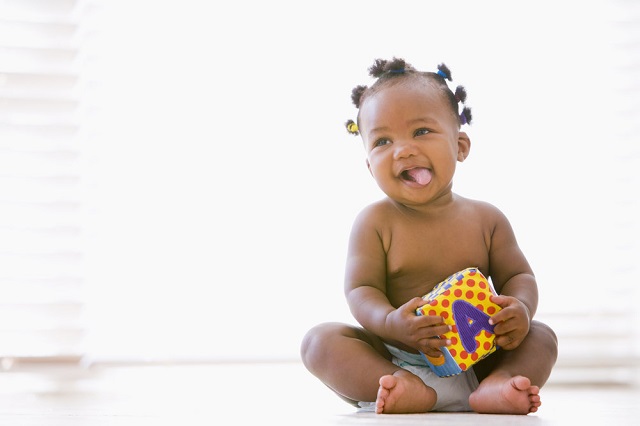
The Sunday News

As a physiotherapist I have had the privilege of working with many children. As a result I have learnt the different language development challenges many of them face. To my rescue I have had the privilege of working with a speech and language therapist — Carien Fourie. She has helped me put this week’s issue together and we hope it’s helpful.
Early language development involves many issues including cognition, play skills, social interaction and oral-motor development. As children awaken to the world at birth, they start a long cycle of language development which involves the understanding (receptive) and production (expressive) of language.
0-6 months —
Baby makes pleasurable sounds like cooing
Baby uses different cries to express their needs
Smiles when spoken to
Baby recognises voices
Baby is able to turn his head to the direction of sound
Baby listens when you talk to him
Baby babbels using the sounds /p/, /b/, /m/.
7-12 months —
Baby understands the meaning of no
Baby responds to simple requests
Baby recognises their own name
Baby babbles using long and short groups of sounds
Baby uses speech sounds to get attention and not just crying
At 12 months baby has a vocabulary of between one to three words
13-18 months —
Imitates individual words
Baby uses jargon
Follows some simple commands
Able to identify one to three body parts
Vocabulary consists of 3 to 20 or more words that is mostly nouns
Combines gestures and vocalisations
19-24 months —
Baby has a vocab of 50-100 words
Receptive vocab of 300 words
Baby starts to use words like he, she, me
Asks and answers wh- questions (who, where, when, what)
Knows five body parts
Able to name a few familiar objects
Enjoys listening to stories
Points to pictures when named
2-3 years —
Speech becomes more clear
Requests items by name
Identifies body parts
Uses two to four word phrases
Vocabulary of 50-250 words
Understands 500-900 words
Follows two-part commands
3-4 years —
Uses language to express emotions
Uses four to five words in sentences
Has an 800 to 1 500 vocab
May repeat self often
Participates in long conversations
Follows two- and three-part commands
4-5 years —
Imitatively counts to 5
Counts to 10 by memorisation
Answers questions about function
Vocabulary consists of 900-2 000 words
Accurately tells about experiences at school etc
Listens to short stories and can answer questions about it
Answers complex two-part questions
Understands about 10 000 words
LANGUAGE DELAY AND LANGUAGE DISORDER
A child who demonstrates language development that follows the typical pattern but begins later or proceeds more slowly than expected would be said to have a “language delay.” Children who demonstrate difficulties learning language skills that do not follow a typical developmental pattern are said to have a “language disorder.” For example, a child who is two and is just learning first words would probably be said to have a delay. A child who is four and has a good vocabulary but only speaks in one or two word sentences would probably be said to have a language disorder.
Language Delay and Language Disorders can occur alone or be secondary to autism, Pervasive Developmental Disorder, Attention Deficit Disorder, hearing loss, neurological impairments, or head trauma. As part of your child’s speech and language evaluation, your therapist may ask for consultations with one or more of the following: Psychologist, Audiologist, Learning Disabilities Teacher Consultant, Paediatrician, Neurologist and/or Psychiatrist. These professionals often help the SLP rule out or diagnose specific disabilities that can occur with language problems.
EARLY WARNING SIGNS:
There are some early warning signs that SLPs try to look for when evaluating a young child:
poor eye contact
poor imitation skills
disinterest in paired games like “peek-a-boo”
short attention span
difficulty eating various foods
aggressive behaviours/tantrums
inappropriate play behaviours (ie, inability to complete a puzzle, not placing action on objects, disinterest in age-appropriate toys)
SPEECH AND LANGUAGE THERAPY:
The SLP will develop an individualised programme for each child. In general, a child with a language disorder usually receives speech therapy one to four times a week for a duration of 30-60 minutes. (This depends on the age of the child and the severity of the disorder.) Early intervention is the best bet for children with early language delay and disorders. Therapy can start during infancy, as a parent-based programme. As parents, you can use suggestions and activities provided by the speech therapist to promote language skill development at home.
Article compiled by Carien Fourie (Speech and Language therapist) and Lee-Anne Hall (BSc Physiotheraphy).



